Your cart is currently empty!
Blog
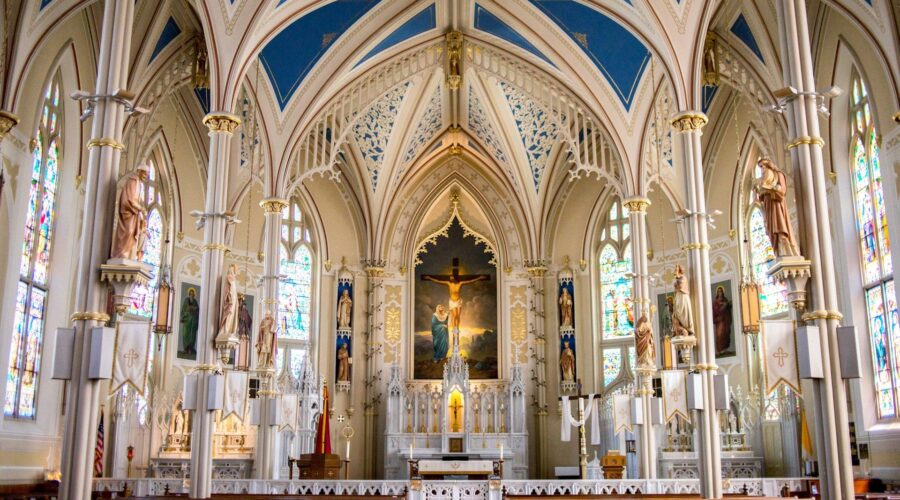
Immerse Yourself in the Rich Traditions of Russian Orthodox Religion: A Comprehensive Guide
Delve into the intricate world of Russian Orthodox religion, a faith that has shaped the cultural and spiritual landscape of Russia for centuries. This comprehensive guide will illuminate the key aspects of this ancient tradition, exploring its history, beliefs, practices, and impact on Russian society.
.
Origins and History
Russian Orthodox Christianity emerged in the 10th century when the Grand Prince of Kiev, Vladimir I, converted to Christianity and baptized his people. The adoption of Eastern Orthodoxy from the Byzantine Empire marked a pivotal moment in Russian history, profoundly influencing its religious, political, and cultural development.
Key Figures and Events
- Vladimir I: Grand Prince who initiated the baptism of Russia
- Olga of Kiev: Vladimir’s grandmother, who converted to Christianity
- Sergius of Radonezh: 14th-century monk and spiritual leader, known for his role in the defense of Moscow
- Peter the Great: 18th-century emperor who reformed the Russian Orthodox Church and established the Holy Synod
Beliefs and Practices
Russian Orthodox Christianity shares core beliefs with other Eastern Orthodox traditions, emphasizing the divinity of Christ, the importance of the Virgin Mary, and the veneration of saints. Its practices are rooted in ancient rituals and traditions, passed down through generations.
Core Beliefs
- Trinity: Father, Son, and Holy Spirit as one God
- Incarnation: Jesus Christ as the Son of God, fully human and fully divine
- Redemption: Salvation through faith in Christ’s death and resurrection
- Veneration of Saints: Intercession of holy men and women with God
Religious Practices
- Liturgy: Divine service consisting of prayers, hymns, and readings
- Iconography: Use of religious icons as aids to devotion
- Fasting: Observance of periods of abstaining from certain foods
- Sacraments: Baptism, Confession, Eucharist, and other sacraments
Orthodox Church in Russia
The Russian Orthodox Church is the largest and most influential Christian denomination in Russia. Throughout history, it has played a crucial role in Russian society, shaping its political, cultural, and artistic landscapes.
Patriarch of Moscow
The head of the Russian Orthodox Church is the Patriarch of Moscow and All Russia, who exercises supreme ecclesiastical authority.
Monasteries and Convents
Monasticism has been an integral part of Russian Orthodox Christianity since its early days. Monasteries and convents serve as centers of spiritual life and cultural heritage, preserving ancient traditions and fostering religious renewal.
Impact on Russian Culture
Russian Orthodox religion has deeply influenced Russian culture, inspiring countless works of art, literature, and music. Its iconography, architecture, and traditions have become synonymous with Russian identity.
Contemporary Challenges and Developments
Like other religious institutions, the Russian Orthodox Church faces contemporary challenges and opportunities. Issues related to secularization, globalization, and the role of the Church in society continue to shape its development.
Secularization and Atheism
After the Soviet era, many Russians adopted secular or agnostic beliefs. The Church is actively engaging with society to address this challenge.
Ecumenical Dialogue
The Russian Orthodox Church participates in ecumenical dialogue with other Christian denominations, seeking to promote unity and understanding.
Essential Terms and Concepts
To gain a deeper understanding of Russian Orthodox religion, it’s helpful to familiarize yourself with some essential terms and concepts:
Term Explanation Icon Religious painting on wood, venerated as a sacred image Liturgy Formal prayer service, consisting of hymns, readings, and prayers Priest Ordained minister who performs sacraments and leads worship Bishop Senior clergyman who oversees a diocese and has the authority to ordain priests Patriarch Head of a national or regional Orthodox Church Conclusion
Russian Orthodox religion is a multifaceted and captivating faith tradition that has played a pivotal role in shaping Russian society and culture. Its ancient beliefs, intricate practices, and enduring influence continue to inspire and guide millions of people around the world. This guide has provided a comprehensive overview of its key aspects, empowering you to delve deeper into the rich tapestry of Russian Orthodoxy.
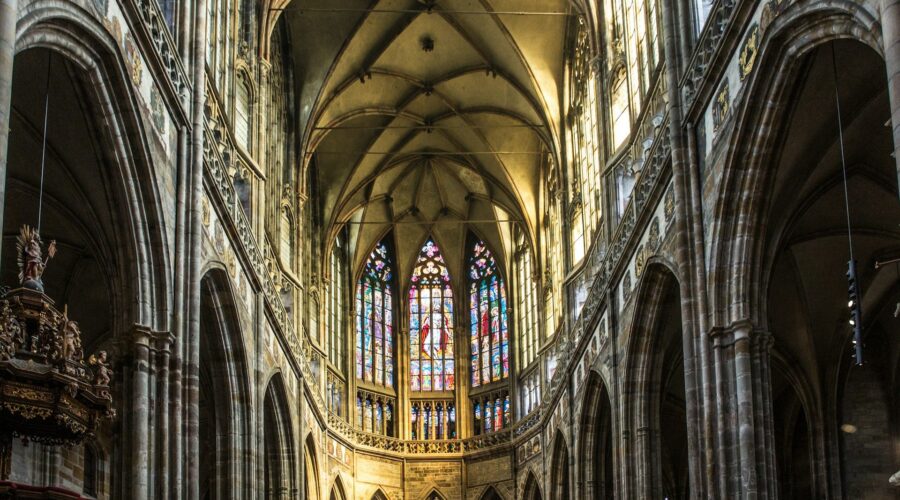
Meet St. Matthias: The Apostle Chosen by Lot
St. Matthias, one of the twelve apostles of Jesus Christ, played a significant role in the early Christian Church. His story is a captivating tale of faith, duty, and the transformative power of God’s grace.
Early Life and Calling
Little is known about Matthias’s early life. According to the Acts of the Apostles, he was a disciple of Jesus from the time of John the Baptist’s ministry until Jesus’s ascension. After Judas Iscariot’s betrayal, the apostles gathered in the upper room in Jerusalem to choose a replacement. They prayed and cast lots, and Matthias was chosen to fill the vacant position.
Ministry and Travels
The Bible does not provide a detailed account of Matthias’s ministry. However, tradition holds that he traveled extensively, preaching the gospel and establishing churches throughout the Roman Empire. Some sources claim he preached in Judea, Ethiopia, and Cappadocia, while others suggest he reached as far as Persia and India.
Apostleship and Death
As an apostle, Matthias was entrusted with the responsibility of spreading the gospel message and witnessing Jesus’s resurrection. He played an active role in the early church, participating in the council held in Jerusalem to address the issue of Gentile believers (Acts 15).
The exact circumstances of Matthias’s death are unclear. Some accounts suggest he was martyred by crucifixion or stoning, while others claim he died peacefully in old age. His tomb is said to be located in the Basilica of St. Matthias in Trier, Germany.
Legacy and Significance
St. Matthias is remembered as one of the foundational pillars of the Christian Church. His selection by lot highlights the providential nature of God’s plans and the importance of trusting in his sovereignty. Matthias’s life and ministry serve as a reminder that even those who may seem ordinary can be called to extraordinary service.
Scriptural References
Further Reading
Conclusion
St. Matthias, the apostle chosen by lot, stands as a testament to God’s faithfulness and the transformative power of his grace. His life and ministry remind us that even those who may seem ordinary can be used by God to accomplish extraordinary things. As we continue to follow Christ, may we be inspired by Matthias’s faith and dedication to the gospel message.
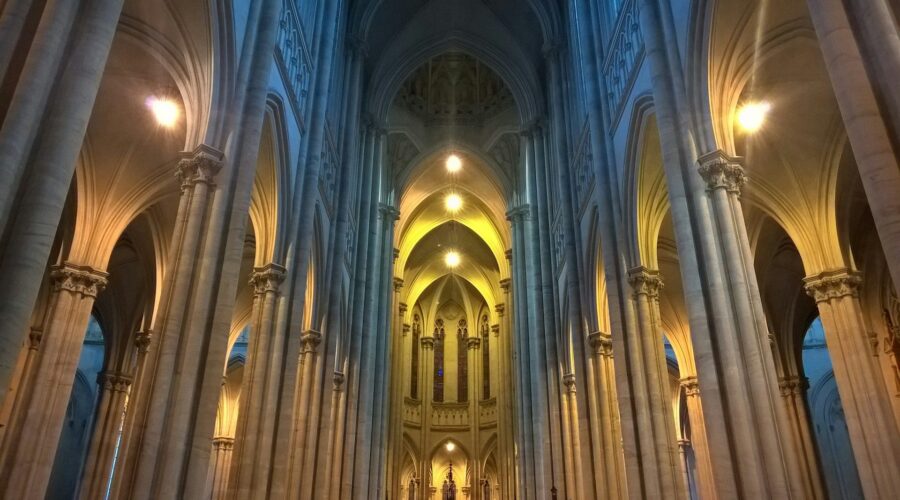
Unveiling the Significance of Matthew 9:35-38: Jesus’ Compassionate Call
Understanding the Context
Matthew 9:35-38 is part of the larger context of Jesus’ ministry in Galilee. In this passage, we witness Jesus’ compassionate response to the needs of the people around him. He is deeply moved by their plight and takes action to bring healing, restoration, and hope.
Jesus’ Mission
Preaching and Teaching (v. 35)
Jesus’ primary mission was to proclaim the good news of God’s kingdom. He traveled throughout Galilee, preaching in synagogues and teaching on the streets. His message centered on the coming of the kingdom of God and the need for repentance.
Healing and Casting Out Demons (v. 35)
In addition to preaching and teaching, Jesus also performed many miracles. He healed the sick, cast out demons, and raised the dead. These miracles demonstrated his power and compassion and drew large crowds of people to him.
The Harvest is Plentiful (v. 37)
Jesus observed the vast need among the people. He realized that there were many who were spiritually lost and hurting. He compares this need to a harvest that is ready to be reaped.
The Laborers are Few (v. 37)
Despite the great need, Jesus notes that there are few laborers to meet it. He calls for more workers to join him in his mission of reaching out to the lost and ministering to the needy.
Asking for More Workers (v. 38)
Jesus instructs his disciples to pray to the Lord of the harvest to send out more laborers. He recognizes that the task of spreading the gospel and caring for the needs of the people is not his alone but requires the involvement of others.
Implications for Today
The Need for Compassion
Matthew 9:35-38 reminds us of Jesus’ deep compassion for the needs of others. We are called to follow his example by being sensitive to the suffering and needs of those around us.
The Importance of Ministry
Jesus’ call for more laborers highlights the importance of ministry. We are each called to play a role in spreading the gospel and serving the needs of our communities.
The Power of Prayer
Jesus instructs us to pray for more workers in the harvest. Prayer is a powerful tool that can bring about God’s will in the world. We can pray for more missionaries, pastors, teachers, and other leaders to serve in the kingdom of God.
Conclusion
Matthew 9:35-38 provides a powerful glimpse into Jesus’ compassionate heart and his mission to meet the needs of the lost and hurting. As followers of Christ, we are called to share in this mission by showing compassion to others, engaging in ministry, and praying for more laborers in the harvest. By following his example, we can make a lasting impact on the world and bring hope and healing to those in need.
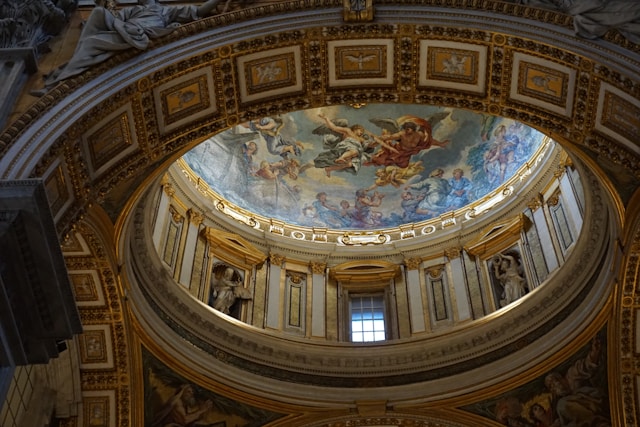
Unlocking the Secrets of 1 Corinthians 14:34: A Comprehensive Guide

Introduction
1 Corinthians 14:34 is a pivotal verse that addresses the role of women in the church and has been subject to much debate and interpretation. This comprehensive guide delves into the context, meaning, and implications of this verse, providing a thorough understanding for readers.
Context of 1 Corinthians 14:34
1 Corinthians 14:34 is part of a larger discussion about order and propriety in worship services. In the preceding verses, Paul exhorts the Corinthians to conduct their assemblies with respect and order, emphasizing the importance of tongues being interpreted and prophecies being delivered in a fitting manner.
Cultural and Historical Context
In the first-century Roman Empire, women had limited public roles and were expected to be submissive to men. This societal context influenced how Paul addressed the issue of women’s participation in church gatherings.
Meaning of 1 Corinthians 14:34
Verse 34 states: “Let your women keep silent in the churches, for they are not permitted to speak; but they are to be submissive, as the law also says.”
“Let your women keep silent”
The Greek word for “silent” (sigatō) literally means “to cause to be silent” or “to restrain.” Paul’s instruction here is not an absolute prohibition on women speaking but rather a directive to limit their public speech in the context of church services.
“For they are not permitted to speak”
The phrase “not permitted” (ou epithetai) refers to the societal norm that restricted women from teaching or holding positions of authority in public assemblies, including religious gatherings.
“But they are to be submissive”
The word “submissive” (hypotassomai) implies a voluntary and respectful submission to the established order of authority. It does not imply inferiority or degradation but rather a recognition of the God-ordained roles within the church.
“As the law also says”
Paul’s reference to “the law” likely refers to the broader Old Testament Scriptures, which teach about the traditional roles of men and women in religious life and society.
Implications of 1 Corinthians 14:34
Roles in the Church
Verse 34 affirms the traditional gender roles in the early church, with men primarily responsible for public teaching and leadership, while women were expected to be supportive and respectful of their authority.
Order and Decorum in Worship
Paul’s instruction is intended to maintain order and decorum in worship services, ensuring that the focus remains on the Word of God and the building up of the body of Christ.
Continuing Debate
The interpretation of 1 Corinthians 14:34 remains a subject of debate, with some arguing for a more egalitarian interpretation that allows for women’s participation in ministry while others maintain a more traditional view that limits their public speaking roles.
Tips for Understanding 1 Corinthians 14:34
* Read the surrounding verses (1 Corinthians 14:26-40) for a broader context.
* Consider the cultural and historical context in which the verse was written.
* Examine the original Greek text to fully grasp the meaning of the words used.
* Understand that Paul’s instructions are specific to church worship services and may not apply to other contexts.
* Be aware of the ongoing debate and different interpretations surrounding this verse.Conclusion
1 Corinthians 14:34 offers a glimpse into the social and religious norms of the early church. By understanding the context, meaning, and implications of this verse, we can better appreciate the challenges and debates that shaped the development of Christian worship practices. Ultimately, the goal is to seek godly order and unity within the church while respecting the biblical principles that guide us.
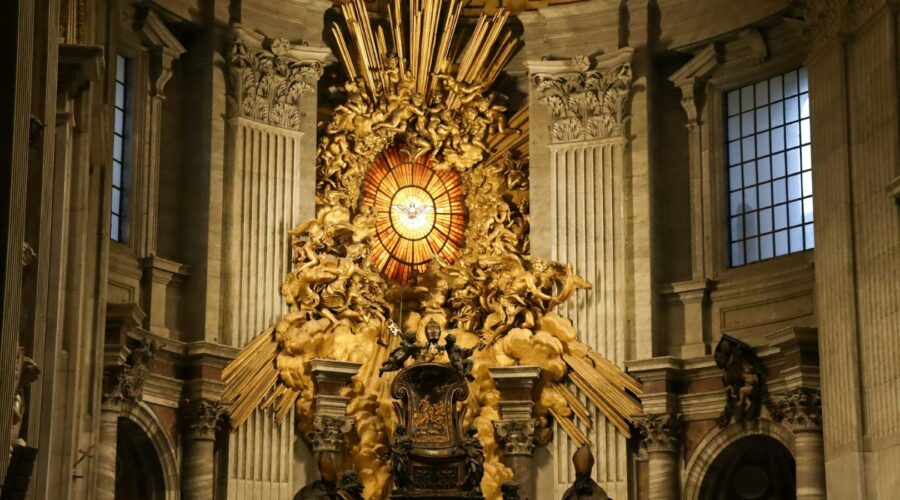
St Peter’s Church: A Historical and Architectural Gem in the Heart of Rome
A Timeless Sanctuary in the Eternal City
St Peter’s Church, located in the heart of Vatican City, stands as a testament to Christian history, architectural grandeur, and artistic brilliance. As one of the holiest sites in Christendom and a renowned masterpiece of Renaissance and Baroque art, the basilica has captivated pilgrims, art enthusiasts, and architects for centuries.
Historical Roots and Significance
Apostolic Origins
St Peter’s Church traces its origins to the martyrdom of Saint Peter, one of the twelve apostles of Jesus Christ. Tradition holds that Peter was crucified in 64 AD in the Circus of Nero, located near the current site of the basilica. His remains are believed to be interred beneath the high altar of the church.
Construction and Evolution
Over the centuries, a series of churches and basilicas have stood on the site of St Peter’s. The current basilica was commissioned by Pope Julius II in 1506 and took over a century to complete. Renowned architects such as Bramante, Michelangelo, and Bernini contributed to its design and construction.
Architectural Marvel:
St Peter’s Church is an architectural masterpiece that showcases a harmonious blend of Renaissance and Baroque styles.
Imposing Facade
The imposing facade, designed by Carlo Maderno in the 17th century, features a grand colonnade with 284 Doric columns, a central loggia, and intricate sculptures.
Vast Interior
The interior of the basilica is simply awe-inspiring, stretching over 700 feet in length and capable of accommodating an estimated 20,000 people. Its towering nave is flanked by two monumental aisles, each adorned with chapels, sculptures, and paintings.
Iconic Dome
The most iconic feature of St Peter’s is its massive dome, designed by Michelangelo. Rising to a height of over 450 feet, the dome is an architectural marvel that combines engineering prowess with artistic beauty. It features a series of intricate frescoes and mosaics depicting biblical scenes.
Artistic Treasures
St Peter’s Church is a treasure trove of art and artifacts from various historical periods.
Pietà
The Pietà, a poignant marble sculpture by Michelangelo, is one of the most famous and revered artworks in the world. It portrays the Virgin Mary cradling the body of Jesus after his crucifixion.
Baldacchino
Bernini’s colossal bronze baldacchino, located over the high altar, is a masterpiece of Baroque architecture. Its intricate columns, cherubs, and drapery create a sense of grandeur and opulence.
Vatican Grottoes
Beneath the basilica lie the Vatican Grottoes, where visitors can explore chapels, tombs, and relics of numerous popes and saints.
Pilgrimage and Worship
St Peter’s Church is a major pilgrimage destination for Catholics and Christians from around the world.
Papal Masses
The basilica hosts papal masses on significant religious occasions, including Easter, Christmas, and the feast of Saints Peter and Paul.
Confessions
The basilica’s confessionals provide an opportunity for pilgrims to seek reconciliation and receive the sacrament of penance.
Prayer and Meditation
The peaceful atmosphere of the basilica offers visitors a sanctuary for prayer and meditation.
Practical Information
Visiting Hours
St Peter’s Church is open daily from 7:00 AM to 6:30 PM (closed on Wednesdays).
Admission
Admission to the basilica is free. However, there may be a small fee for access to certain areas, such as the dome or the Vatican Grottoes.
Dress Code
Visitors are expected to dress respectfully when visiting St Peter’s Church. Shoulders should be covered, and shorts are not permitted.
Accessibility
The basilica is accessible to visitors with disabilities. Ramps, elevators, and wheelchairs are available.
Tips for Visiting
* Plan your visit in advance, especially during peak season.
* Arrive early to avoid crowds.
* Allow ample time to explore the vast interior and appreciate the artistic treasures.
* Consider taking a guided tour to gain insights into the basilica’s history and architecture.
* Climb to the top of the dome for breathtaking views of Vatican City and Rome.
* Respect the sacred nature of the site and observe silence while inside the basilica.Conclusion
St Peter’s Church is a must-see attraction in Rome and a testament to the enduring power of faith, art, and architecture. Its historical significance, architectural splendor, and artistic treasures continue to inspire and captivate visitors from all walks of life. Whether you are a pilgrim, an art enthusiast, or simply curious about the history of Rome, a visit to St Peter’s Church is an unforgettable experience that will leave a lasting impression.
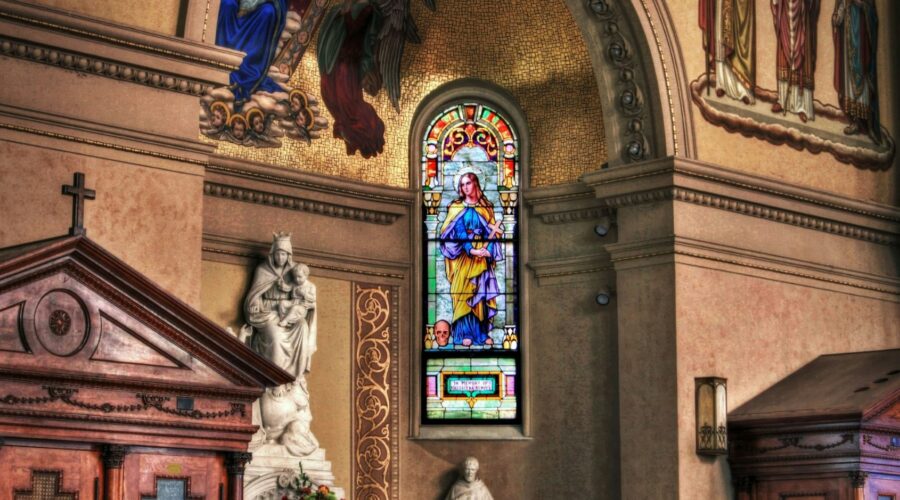
Unveiling Saint Matthew: A Comprehensive Guide to the Apostle and Evangelist
Introduction
Saint Matthew, one of the twelve apostles of Jesus Christ, holds a prominent position in both the New Testament and Christian tradition. As the author of the Gospel of Matthew, he played a pivotal role in documenting the life and teachings of Jesus. This detailed blog post aims to provide a comprehensive overview of Saint Matthew, covering his life, ministry, and enduring legacy.
Early Life and Profession
Born in the 1st century AD, Matthew was originally known as Levi. He worked as a tax collector for the Roman government in Capernaum, a town on the Sea of Galilee. Tax collectors were often despised by the Jewish people as they were seen as collaborators with the Roman occupiers.
The Call of Jesus
Capernaum Encounter
Matthew’s life took a dramatic turn when he encountered Jesus in Capernaum. According to the Gospels, Jesus called Levi to follow him, and Matthew immediately left everything behind and became a disciple. This encounter marked the beginning of Matthew’s journey as a follower of Christ.
Tax Collector to Apostle
Matthew’s background as a tax collector made him an unlikely candidate for apostleship. Yet, Jesus saw beyond his profession and recognized his potential as a witness and a leader. Matthew became one of the twelve apostles, the inner circle of Jesus’ closest followers throughout his ministry.
Matthew’s Gospel
Saint Matthew is traditionally attributed as the author of the first Gospel in the New Testament, known as the Gospel of Matthew. It is believed to have been written around 80-90 AD, initially for a Jewish-Christian audience.
Key Themes
- Emphasis on Jesus’ Jewishness: Matthew’s Gospel emphasizes Jesus’ connection to the Old Testament and Jewish tradition.
- Fulfillment of Prophecy: The Gospel presents Jesus as the fulfillment of numerous prophecies from the Hebrew Bible.
- Instruction for the Church: Matthew includes teachings on Christian ethics, discipleship, and the kingdom of God.
Structure and Content
- Genealogy and Infancy Narratives: The Gospel begins with Jesus’ genealogy and accounts of his virgin birth and childhood.
- Sermon on the Mount: A central section of the Gospel contains Jesus’ famous Sermon on the Mount, outlining his ethical teachings.
- Parables: Matthew’s Gospel includes numerous parables used by Jesus to illustrate his teachings.
- Passion, Death, and Resurrection: The Gospel culminates in the account of Jesus’ passion, death, and resurrection.
Ministry and Mission
Following Jesus’ ascension into heaven, Matthew continued his mission as a disciple and evangelist. Church tradition holds that he preached in various regions, including Judea, Ethiopia, and Parthia.
Spread of Christianity
Matthew played a significant role in spreading the Christian faith beyond Palestine. His Gospel became a vital tool for mission work, providing a written account of Jesus’ life and teachings to Gentile audiences.
Martyrdom and Legacy
According to tradition, Saint Matthew was martyred in Ethiopia around the year 60 AD. His death served as a testament to his unwavering faith and the sacrifices made by early Christians.
Prayer and Patronage
Saint Matthew has been venerated as a saint by the Christian Church since the earliest centuries. He is often portrayed holding a money bag to symbolize his past as a tax collector and a scroll or book representing his Gospel.
Patron Saint
Saint Matthew is considered the patron saint of accountants, tax collectors, and bankers due to his association with the tax collection profession.
Prayer to Saint Matthew
O Saint Matthew, apostle and evangelist, you who left all to follow Jesus, pray for us who struggle to make sacrifices for the sake of the Gospel. Help us to be faithful witnesses like you and to proclaim the good news of God’s love and salvation.
Conclusion
Saint Matthew’s life and legacy stand as a testament to the transformative power of faith. From being an outcast to a chosen apostle, he became an instrumental figure in the early Church, authoring one of the most important Gospels. Saint Matthew’s unwavering commitment to the Gospel and his example of conversion continue to inspire Christians throughout the ages.
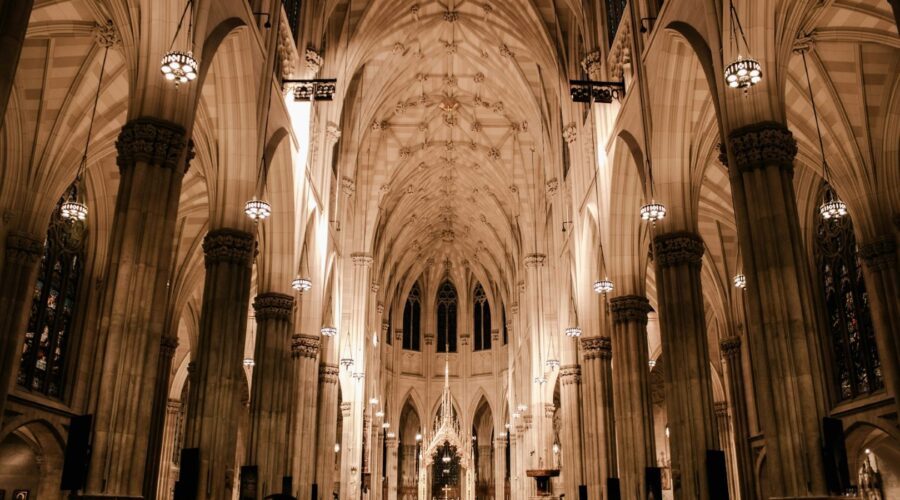
Our Lady of Peace Church: A Haven of Faith and Community
In the heart of the bustling metropolis, where ancient traditions intertwine with modern aspirations, stands Our Lady of Peace Church. This magnificent edifice serves as a spiritual beacon, drawing countless souls seeking solace, guidance, and a sense of belonging. With its rich history, stunning architecture, and dedicated congregation, Our Lady of Peace Church is an integral part of the city’s cultural and spiritual landscape.
History
The story of Our Lady of Peace Church begins in the mid-19th century when a small group of Irish immigrants gathered to pray in a rented house. As their numbers grew, they longed for a permanent place of worship, one that would honor their faith and provide a sense of community. In 1854, they purchased a plot of land on the outskirts of town and began the arduous task of constructing their church.
The building process was fraught with challenges but the determined congregation persevered. Brick by brick, they laid the foundation and raised the walls. In 1857, the church was finally completed, a testament to the unwavering faith and hard work of its founders. Over the years, the church has undergone several expansions and renovations, accommodating the growing congregation and adapting to the changing needs of the community.
Architecture
Our Lady of Peace Church is a masterpiece of Gothic Revival architecture. Its soaring spires, intricate stained-glass windows, and vaulted ceilings create an awe-inspiring atmosphere that invites contemplation and prayer. The exterior of the church is adorned with intricate carvings and sculptures, paying homage to the saints and biblical figures who have inspired generations of believers.
Inside the church, the nave is lined with rows of wooden pews, facing the altar. The sanctuary is adorned with a magnificent altarpiece, depicting scenes from the life of Jesus Christ. A large pipe organ occupies the choir loft, filling the space with its majestic sounds.
Congregation
Our Lady of Peace Church is home to a vibrant and diverse congregation. People from all walks of life come together to worship, celebrate, and support one another. The church offers a wide range of programs and services, including daily Mass, Sunday services, Bible studies, and youth group activities. There is a strong emphasis on community outreach, with members actively involved in serving the needs of the underprivileged.
Clergy
Our Lady of Peace Church is led by a dedicated team of priests and deacons who provide spiritual guidance, celebrate the sacraments, and serve the congregation. The pastor, Father Michael O’Brien, is a compassionate and visionary leader who has served the church for over 20 years. He is known for his homilies that inspire hope, challenge listeners, and offer practical wisdom for daily life.
Community Involvement
Our Lady of Peace Church is more than just a building; it is a vital part of the community. The church hosts a variety of events and programs that bring people together, foster a sense of belonging, and make a positive impact on the surrounding area. These include:
- A monthly food pantry that provides groceries to families in need
- A soup kitchen that serves meals to the homeless and hungry
- A tutoring program for underprivileged children
- A senior citizen outreach program that provides companionship and assistance
Conclusion
Our Lady of Peace Church is a beacon of faith, hope, and community in the heart of the city. Its rich history, stunning architecture, dedicated congregation, and unwavering commitment to serving others make it a true sanctuary for all who seek spiritual nourishment and a sense of belonging. Whether you are a lifelong member or a visitor seeking inspiration, Our Lady of Peace Church welcomes you with open arms.
Contact Information Hours of Operation Address: 123 Main Street, Anytown, CA 12345 Phone: (555) 555-1212 Email: [email protected] Website: www.ourladyofpeace.org Sunday Mass: 8:00 AM, 10:00 AM, 12:00 PM Weekday Mass: 7:00 AM, 12:00 PM 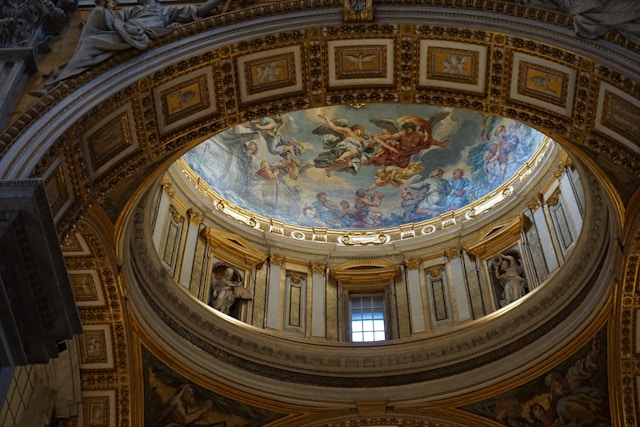
Divine Mercy Novena 2022: Experience God’s Unconditional Love
Are you longing for a deeper connection with God? Seeking divine guidance and blessings in your life? The Divine Mercy Novena is an extraordinary nine-day devotion that offers an opportunity to encounter the boundless mercy and love of God. Observed annually, the Divine Mercy Novena holds significant importance in the Catholic tradition and is celebrated by millions worldwide.
Understanding the Divine Mercy Novena
Historical Origin
The Divine Mercy Novena originated from the revelations of Jesus Christ to Saint Faustina Kowalska, a Polish nun, between 1931 and 1938. In these revelations, Jesus revealed the depths of his mercy and instructed Saint Faustina to spread his message of love and forgiveness.
Purpose and Significance
The Divine Mercy Novena is a special time of prayer and devotion dedicated to seeking God’s mercy and blessings. It is believed that those who participate in the novena with faith and trust will receive abundant graces and spiritual benefits.
Dates and Observance
The Divine Mercy Novena is typically observed from Good Friday until the Feast of Divine Mercy, which falls on the Sunday after Easter. In 2022, the Divine Mercy Novena will commence on Friday, April 15th, and conclude on Sunday, April 24th.
The Novena Prayers
The Divine Mercy Novena involves praying a specific set of prayers over nine consecutive days. These prayers include:
- Opening Prayer: Begin each day with the Opening Prayer.
- Chaplet of Divine Mercy: Recite the Chaplet of Divine Mercy on each day of the novena.
- Closing Prayer: Conclude each day with the Closing Prayer.
The specific prayers and instructions for each day can be found in various resources online or in printed prayer books.
Benefits of Participating
Participating in the Divine Mercy Novena offers numerous spiritual benefits, including:
- Increased Faith and Trust in God: Deepens your connection to God and strengthens your trust in his love.
- Forgiveness and Healing: Experience God’s healing touch, forgiveness of sins, and liberation from spiritual burdens.
- Graces and Blessings: Receive abundant blessings, spiritual guidance, and support in your life.
- Conversion and Renewal: Find inspiration for spiritual growth, conversion, and a renewed sense of purpose.
- Intercession for Others: Pray for the needs of others and seek God’s mercy on their behalf.
Tips for a Meaningful Novena
To fully benefit from the Divine Mercy Novena, consider these helpful tips:
- Prepare Your Heart: Begin the novena with a sincere and open heart, ready to receive God’s love.
- Pray with Faith and Trust: Believe in the power of God’s mercy and trust in his promises.
- Make a Commitment: Commit to participating fully in the novena, including daily prayers and reflections.
- Seek God’s Guidance: Ask for the Holy Spirit’s guidance and understanding throughout the novena.
- Share the Experience: Invite others to join you in prayer and share your experiences to spread God’s message of mercy.
Additional Resources
To deepen your understanding and experience of the Divine Mercy Novena, consider exploring the following resources:
The Divine Mercy Shrine
Pope John Paul II’s Encyclical on Divine Mercy
Divine Mercy: A Guide for Praying the Devotion by Fr. George W. KosickiConclusion
The Divine Mercy Novena is an extraordinary opportunity to experience God’s boundless love, forgiveness, and blessings. By participating in this special devotion, you open your heart to the transformative power of God’s mercy and invite his grace into your life. Embrace this spiritual journey with faith and trust, and may you be filled with the profound joy and peace that comes from encountering the Divine Mercy.
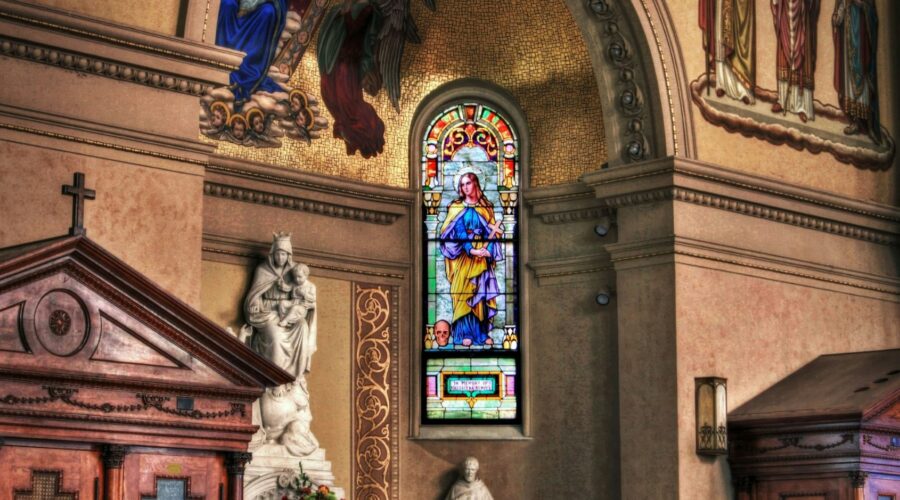
Discover Gospel Light Baptist Church: A Beacon of Faith and Community
About Gospel Light Baptist Church
Established in [Year], Gospel Light Baptist Church stands as a vibrant and enduring pillar in [City]. Rooted in the teachings of Jesus Christ, our church is committed to spreading the gospel message of love, hope, and redemption.
Our Mission
- To proclaim the saving grace of Jesus Christ to all people.
- To nurture spiritual growth through Bible study, prayer, and fellowship.
- To serve the community with compassion, outreach programs, and discipleship.
Our Services
We offer a variety of services throughout the week to meet the spiritual needs of our congregation:
Sunday Services
- Morning Worship (10:00 AM)
- Evening Service (6:00 PM)
Weekday Services
- Tuesday: Bible Study (7:00 PM)
- Thursday: Prayer Meeting (7:00 PM)
- Saturday: Youth Group (10:00 AM)
Ministries and Fellowships
Adult Ministries
- Men’s Fellowship
- Women’s Fellowship
- Senior Adult Ministry
- Adult Sunday School Classes
Youth Ministries
- Junior Church (Ages 4-10)
- Youth Group (Ages 11-18)
- Young Adult Ministry (Ages 19-25)
Community Outreach
Gospel Light Baptist Church actively participates in community outreach programs to make a positive impact in our neighborhood. Our initiatives include:
- Food pantry and clothing drives
- Tutoring and mentoring programs
- Soup kitchen and homeless outreach
- Disaster relief assistance
Our Beliefs
As a Baptist church, we hold to the following core beliefs:
- The Bible is the sole authority for faith and practice.
- Jesus Christ is the only way to salvation through faith in his death and resurrection.
- Baptism by immersion is a symbol of repentance and new life in Christ.
- The Lord’s Supper is a remembrance of Christ’s sacrifice.
- Every believer is a priest and has direct access to God through prayer.
Become a Part of Our Community
We invite you to join us for a service or any of our ministries. Whether you are seeking spiritual guidance, a sense of community, or simply want to learn more about the Christian faith, Gospel Light Baptist Church welcomes you with open arms.
Contact Us
For more information or to get involved, please contact us:
- Website: www.gospellightbaptistchurch.com
- Phone: (555) 123-4567
- Email: [email protected]

Revival Today Church: A Guide to Experiencing God’s Transformative Power
1. What is Revival?
Revival is a spiritual awakening that results in a renewed and deepened relationship with God. It brings about a transformation in individuals and communities, leading to a refreshed passion for faith and a greater impact on the world.
1.1 Characteristics of Revival
- A deep sense of God’s presence and power
- Increased prayer and Bible study
- Repentance and a desire for holiness
- Miraculous experiences and healings
- Outpouring of the Holy Spirit’s gifts
2. The Need for Revival Today
In today’s fast-paced and secular world, the need for revival is more urgent than ever. The spiritual climate has become cool and indifferent, and many people have lost their way.
2.1 Consequences of Lacking Revival
- Spiritual dryness and apathy
- Decline in church attendance and involvement
- Increase in worldliness and compromise
- Erosion of biblical values and morality
3. How to Experience Revival
Revival is not something that can be forced or manufactured. It is a gift from God that comes in response to our prayers and actions.
3.1 Prerequisites for Revival
- Humble yourself before God and repent
- Seek God’s presence through prayer
- Read and study the Bible diligently
- Obey the Holy Spirit’s promptings
3.2 Actions that Promote Revival
- Corporate worship and prayer meetings
- Fasting and spiritual disciplines
- Evangelizing and sharing our faith
- Interceding for others and our nation
4. Examples of Revivals
Throughout history, there have been numerous notable revivals. Some of the most famous include:
4.1 First Great Awakening (1730-1755)
Led by preachers like Jonathan Edwards and George Whitefield, this revival sparked a wave of conversions and spiritual renewal in the American colonies.
4.2 Azusa Street Revival (1906-1909)
This Pentecostal revival in Los Angeles was marked by supernatural manifestations, such as speaking in tongues and divine healings.
5. Benefits of Revival
Experiencing revival has many benefits for individuals and the church community:
5.1 Individual Benefits
- Renewed love for God and a deeper understanding of His nature
- Increased spiritual growth and maturity
- Victory over sin and temptation
- Healing of emotional and physical wounds
- Empowerment to live a more fulfilling life
5.2 Church Community Benefits
- Increased unity and love among members
- Growth in numbers and spiritual maturity
- A strengthened witness to the world
- Transformation of the local community
- Increased influence and impact on society
6. Conclusion
Revival is not merely a thing of the past. It is a reality that God desires to pour out on His people today. By humbling ourselves, seeking His presence, and taking proactive steps to promote revival, we can experience the transformative power of God that brings life, hope, and renewal.
May we pray that God sends a mighty revival throughout the world, awakening hearts, changing lives, and bringing glory to His name.
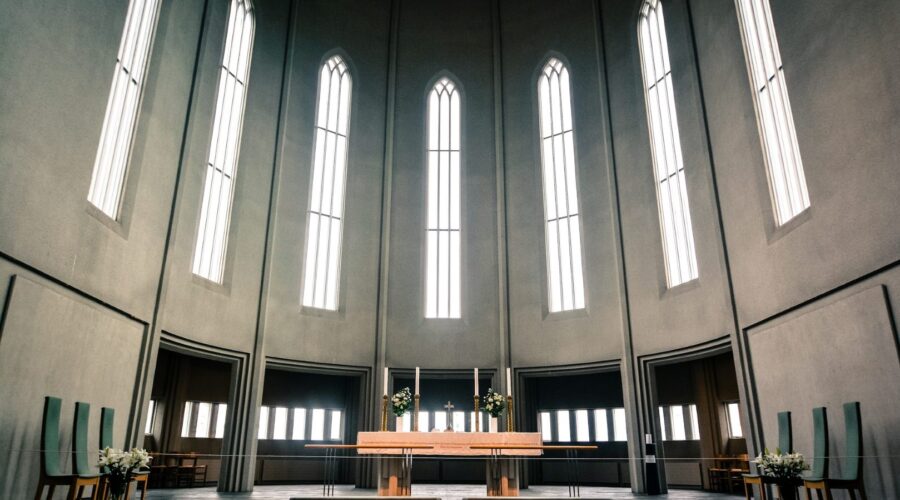
Unveiling the Splendor of Cathedral Churches: A Comprehensive Guide
1. Introduction
Cathedral churches, majestic symbols of faith and architectural prowess, have captivated hearts and minds for centuries. These extraordinary edifices serve as the primary seats of bishops and play a vital role in religious, cultural, and societal landscapes. In this comprehensive guide, we will delve into the captivating world of cathedral churches, exploring their history, architectural features, and significance in diverse communities.
2. Historical Origins
The roots of cathedral churches can be traced back to the early days of Christianity. In the 4th century A.D., under Emperor Constantine, the Edict of Milan granted freedom of worship, leading to the construction of numerous churches. Cathedral churches emerged as the most important of these, housing the bishop’s throne (cathedra) and becoming the center of diocesan administration.
Throughout the Middle Ages, cathedral churches flourished as symbols of ecclesiastical power and wealth. They became grand architectural masterpieces, showcasing the skills of master builders and artisans. The Gothic period witnessed a surge in cathedral construction, with soaring spires and intricate stained-glass windows becoming defining characteristics.
3. Architectural Characteristics
Cathedral churches are renowned for their distinctive architectural features that evoke awe and inspiration. These include:
3.1 Nave and Transepts
The nave is the central and longest section of the church, where the congregation gathers. It is typically flanked by aisles, which are smaller passageways, creating a basilica plan. Transepts, perpendicular to the nave, form the arms of a cross-shaped floor plan.
3.2 Choir and Presbytery
The choir is an enclosed area behind the altar, where the clergy sit. The presbytery, located behind the choir, is the most sacred part of the church, housing the altar and often adorned with elaborate decorations.
3.3 Tower and Spires
Many cathedral churches feature a prominent tower or spire, serving as a landmark and a symbol of the church’s importance. The height of spires has been a testament to the architectural prowess of builders throughout history.
3.4 Facade
The facade, or front entrance of the cathedral, is often elaborately decorated with sculptures, carvings, and stained-glass windows. It provides a glimpse into the grandeur that awaits within.
4. Ecclesiastical Significance
Cathedral churches hold immense religious significance as the seat of the bishop, who oversees the pastoral care of a diocese. They serve as the focal point for diocesan activities, including ordinations, confirmations, and major liturgical celebrations.
Cathedral churches also foster a sense of community among the faithful. They provide a sacred space for worship, fellowship, and spiritual growth. Many cathedrals offer a rich program of concerts, lectures, and educational events, contributing to the cultural and intellectual life of their surroundings.
5. Cultural and Historical Treasures
Cathedral churches have long been repositories of artistic and historical treasures. They house priceless works of art, including:
5.1 Stained-Glass Windows
Stunning stained-glass windows depict biblical scenes, historical events, and sacred figures. They cast colorful hues onto the interior, creating an ethereal atmosphere.
5.2 Sculptures and Carvings
Elaborate sculptures and carvings adorn the walls, columns, and facades of cathedral churches. These works of art depict religious themes, biblical characters, and scenes from daily life.
5.3 Tapestries and Textiles
Many cathedrals possess exquisite tapestries and textiles used for decoration and liturgical purposes. These intricate fabrics showcase the skill of medieval and Renaissance artisans.
6. Architectural Styles
Cathedral churches reflect the architectural styles prevalent at the time of their construction. Prominent styles include:
6.1 Romanesque
Romanesque cathedrals, built from the 11th to 13th centuries, are characterized by rounded arches, thick walls, and massive towers.
6.2 Gothic
Gothic cathedrals, built from the 12th to 16th centuries, showcase pointed arches, ribbed vaults, and intricate stained-glass windows.
6.3 Renaissance
Renaissance cathedrals, built from the 15th to 17th centuries, emphasize symmetry, classical forms, and elaborate ornamentation.
6.4 Baroque
Baroque cathedrals, built from the 17th to 18th centuries, feature elaborate decorations, curved lines, and dramatic lighting effects.
7. Famous Cathedral Churches
Throughout history, numerous cathedral churches have become renowned for their architectural splendor and historical significance. Some notable examples include:
7.1 Notre Dame Cathedral, Paris
Notre Dame Cathedral is a masterpiece of Gothic architecture, known for its iconic flying buttresses and stunning stained-glass windows.
7.2 St. Peter’s Basilica, Rome
St. Peter’s Basilica is the largest cathedral in the world, boasting a vast interior adorned with priceless works of art, including Michelangelo’s “Pietà.”
7.3 Canterbury Cathedral, UK
Canterbury Cathedral is the seat of the Archbishop of Canterbury and one of the most important pilgrimage sites in the Christian world.
7.4 Chartres Cathedral, France
Chartres Cathedral is famous for its exquisite stained-glass windows, which depict over 1,000 biblical scenes and historical figures.
7.5 Cologne Cathedral, Germany
Cologne Cathedral is a masterpiece of Gothic architecture, renowned for its twin spires that dominate the city skyline.
8. Conclusion
Cathedral churches stand as magnificent testaments to the power of faith and human ingenuity. They are not only architectural wonders but also living

Mary, Mother of the Church: A Symbol of Grace and Intercession
Introduction
Mary, the mother of Jesus Christ, holds a prominent place in the Catholic Church. She is revered as the Mother of God and as a model of faith and devotion. The title “Mother of the Church” was officially proclaimed by Pope Paul VI in 1964. It signifies Mary’s role as a spiritual mother to all Christians, not just to her son, Jesus.
Scriptural Basis for Mary’s Role
The biblical foundation for Mary’s role as Mother of the Church can be found in several passages.
John 19:26-27
At the foot of the cross, Jesus entrusts Mary to his disciple John, saying, “Here is your mother.” This act symbolizes Mary’s extended maternal care to all who believe.
Acts 1:14
After the Ascension of Jesus, Mary is depicted as praying with the Apostles. This suggests her continued presence and intercession in the early Church.
Mary’s Intercession
One of the central beliefs associated with Mary’s title as Mother of the Church is her role as an intercessor before God. Catholics believe that Mary intercedes on their behalf, presenting their prayers to her son, Jesus.
Examples of Intercession
Throughout history, there have been numerous accounts of Mary’s intercession, including:
- The wedding at Cana (John 2:1-11)
- The Battle of Lepanto in 1571
- The apparitions at Fatima and Lourdes
Mary’s Example of Faith
In addition to her role as an intercessor, Mary is also seen as a model of faith and devotion. Her “fiat,” or “yes,” to God’s plan for her life (Luke 1:38), exemplifies her unwavering trust in God.
Mary’s faith was tested throughout her life, particularly at the crucifixion of her son. Her steadfastness in the face of adversity is an inspiration to all Christians.
Lessons from Mary’s Faith
We can learn several valuable lessons from Mary’s example of faith:
- Trust in God’s plan, even when it seems difficult.
- Be open to God’s call in our lives.
- Persevere in faith, even in the midst of trials.
Liturgical Significance
The Church celebrates the feast of Mary, Mother of the Church, on the Monday after Pentecost. This feast is a time for Catholics to reflect on Mary’s role and to ask for her intercession.
Mary’s name is also included in the Canon of the Mass, the central prayer of the Catholic Mass. This inclusion acknowledges her special place in the life of the Church.
Conclusion
The title “Mary, Mother of the Church” is a testament to her profound role in the life of all Christians. She is a symbol of grace, intercession, and faith. By following her example and seeking her intercession, we can grow closer to Christ and experience his love and mercy more fully.